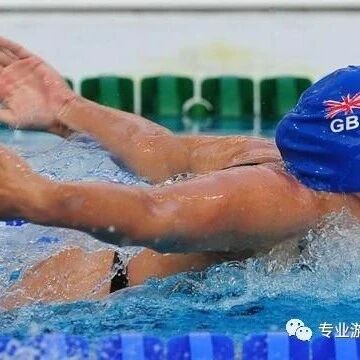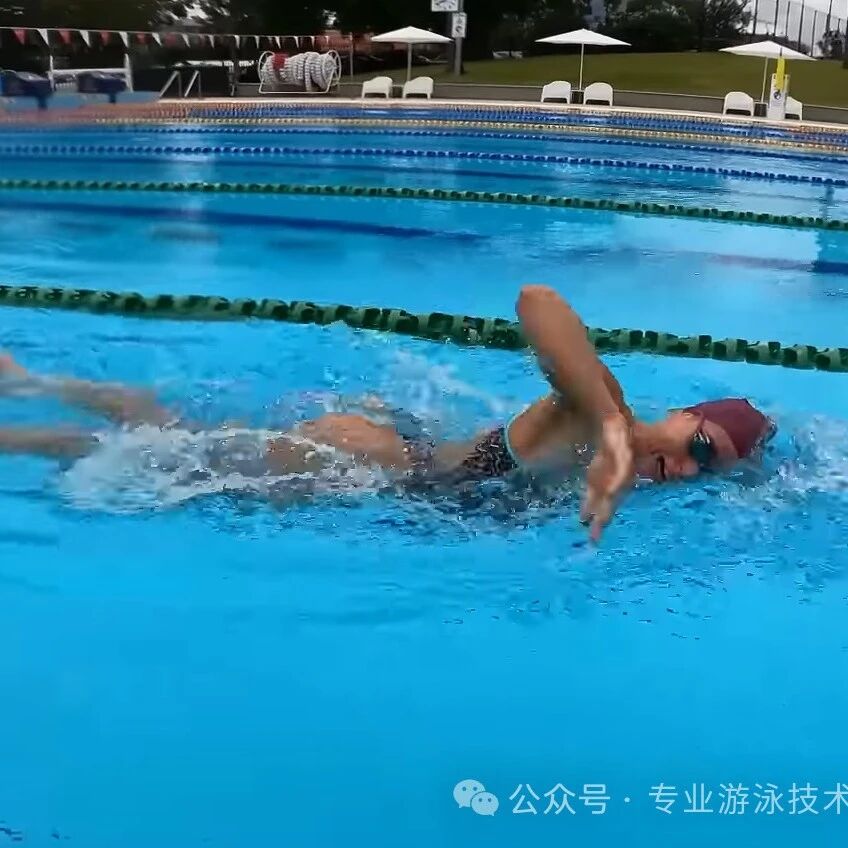Mastering the freestyle body roll makes breathing, arm strokes, and kicking effortless.

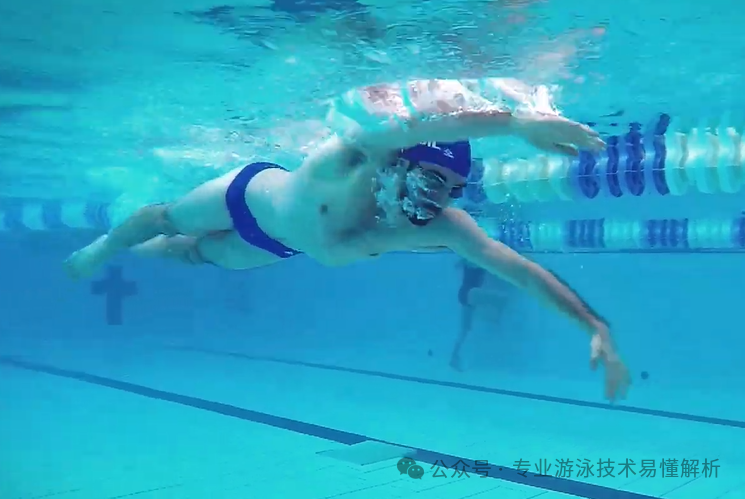
Should you learn breaststroke or freestyle first? Many people are put off by freestyle’s breathing technique and whip kick, so they opt to start with breaststroke instead. In reality, though, freestyle is actually easier to pick up than breaststroke—once you can comfortably float face-down on the water and smoothly roll your body from side to side, mastering the breathing and whip kick becomes much less daunting.
A reminder for beginners: when learning to swim, try to avoid using a nose clip, as it can seriously hinder your ability to master proper breathing techniques. If you're learning freestyle, a snorkel and fins can be helpful—but it’s not recommended to use them for extended periods, as they may lead to dependency and impair your body’s natural ability to develop an accurate sense of buoyancy in the water.
Additionally, when learning freestyle with a snorkel, there’s a critical issue that coaches and students often overlook: the body’s lateral rotation during the stroke. In practice, many swimmers using a snorkel tend to rely on a flat, prone position to glide through the water—rather than actively rotating their bodies to drive the arm movements. While this approach may seem like it sidesteps the breathing challenge, it actually encourages an inefficient freestyle stroke pattern. Moreover, it makes it even harder for swimmers to master the proper technique of body rotation, ultimately hindering their ability to refine and improve their overall freestyle performance.
Therefore, you should incorporate body-tilting movements right from the moment you start practicing floating face-down. Extend your arms forward, shoulder-width apart, or let them rest naturally at your sides, relying solely on your core strength to execute the side turns. Then, add a gentle flick of your feet—this simple yet effective motion will help you easily maintain balance in the water, preventing your lower body from sinking.
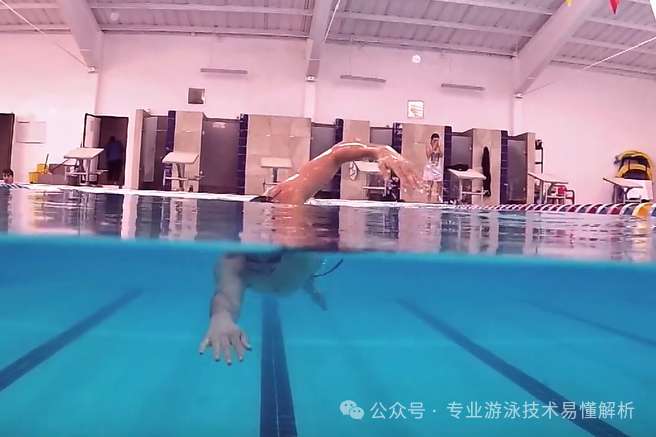
1. Rotate your body to initiate the arm stroke, then extend your arms forward.
After mastering the body-rotation drill described above, move on to practicing the arm stroke—first "hugging" the water, then "pushing" it away. Keep your other arm relaxed and naturally at your side, avoiding any forward extension. Focus on feeling the difference between performing a simple flat-stroke with just your arms and executing the same motion combined with a smooth body rotation. Once you’ve practiced repeatedly with both arms, you’ll start to notice how your body glides effortlessly through the water as your arms push against the water’s resistance.
Building on this, practice the arm-extension movement again—start once more in a prone, floating position. As you twist your body to the side, extend your arms forward, making sure your palms face downward and remain parallel to the water’s surface. Focus on feeling the stretch from your hands all the way through to your shoulders after extending your arms. As always, repeat this motion several times with both arms.
With the practice foundation established above, coordinating the forward extension of your arms with the arm-sculling motion—while simultaneously executing both movements through the body’s lateral rotation—yields far superior results compared to performing each arm movement independently, without engaging the body’s rotation. In this synchronized approach, the two arms work in harmony as they’re driven by the body’s side-to-side motion, and it’s precisely this coordinated arm action, powered by the body’s rotation, that serves as the key factor in steadily improving your freestyle swimming technique.
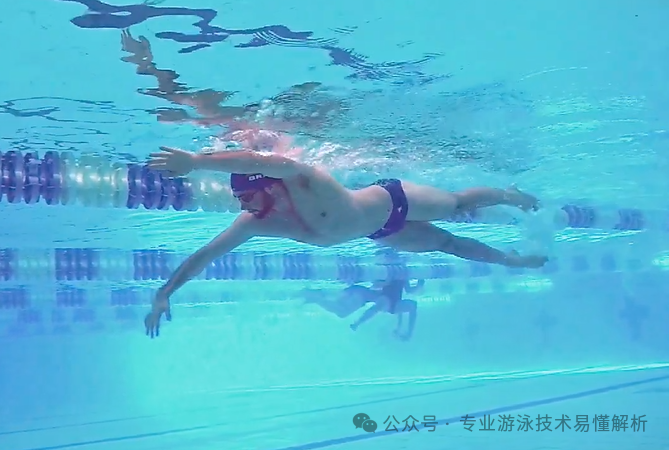
2. Breathing becomes easier and more natural when turning the body sideways.
Some swimmers have already mastered the basics of freestyle breathing, yet they occasionally end up drinking water—or even choking—during the process. One often-overlooked reason: insufficient body rotation. For instance, when breathing on the right side, the body rotates counterclockwise; conversely, when breathing on the left side, the body turns clockwise. As the body rolls to one side, it naturally creates an opportunity to turn the head and breathe—but the head movement should be minimal. However, if the swimmer lies flat on their stomach while turning their head to breathe, or if the body doesn’t rotate far enough, the head movement becomes more pronounced, significantly increasing the risk of water entering the mouth or triggering a choke reflex.
After the arm completes the catch-and-keep phase in the water, the body actively rotates to the side while the arm pushes through the water. When first learning this stroke, avoid applying too much force during the push—it’s enough to simply feel the resistance of the water. This allows the head-turning motion to remain slower and more relaxed and natural. Once the push is complete, the arm exits the water for the recovery phase. During recovery, there’s no need to rush the body into turning toward the opposite side; instead, maintain a sideways swimming position and slow down the recovery process. This helps extend the time available for breathing. As the recovery nears completion, initiate the head turn to inhale, simultaneously guiding the arm into the entry phase as it begins to glide forward in the water.
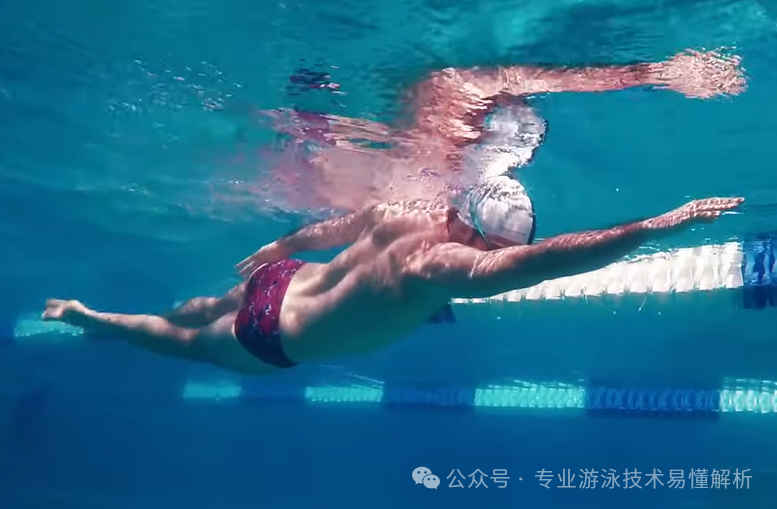
3. Turn the body sideways to switch between cruising and racing modes
Many swimmers and coaches are discussing the differences between straight-arm and bent-arm recovery techniques, as well as the technical focus and training routines for short sprints versus longer-distance swims. Yet, when viewed from a deeper understanding of swimming mechanics, the key to effective arm recovery isn’t whether your arm remains straight or bent—it’s about achieving complete relaxation throughout the recovery phase. Only by relaxing can the bent-arm recovery truly deliver its benefits, such as increasing upper-body weight to help lift the lower body, facilitating a more efficient forward reach before entering the water, and conserving energy for sustained performance.
Now, let’s look at the difference between short sprints and long-distance running: the key lies in their distinct approaches. One aims to exhaust physical energy as quickly as possible within a short timeframe, maximizing immediate athletic performance—think of it like pressing the gas pedal all the way down in a car, prioritizing that exhilarating burst of speed. The other, on the other hand, focuses on conserving energy over a longer distance, ensuring a more balanced and sustainable use of stamina throughout the entire effort—similar to maintaining a steady pace when driving a vehicle on a long journey. This analogy helps clarify an important point: vehicles designed for different purposes naturally have varying handling styles and durability levels, yet they all share the same core engine underneath.
As for how to practice turning your body into a "swimming mode switch," that requires a detailed explanation. However, since lengthy articles tend to deter readers, I’ll address this in a separate piece instead.
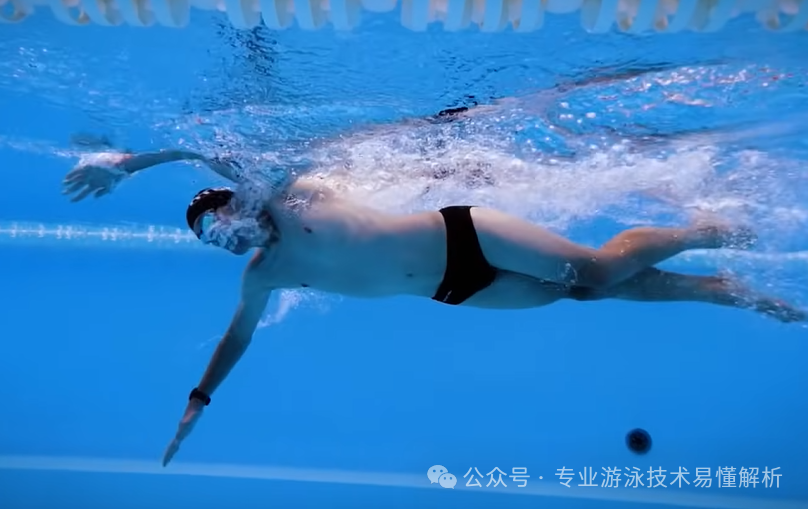
One WeChat official account shares swimming tips, while another focuses on software insights, online resources, and reading experiences.
Thank you for your supportive and encouraging likes, as well as the comments that spark meaningful conversations—and even more, we’d love for you to share and forward this content!
